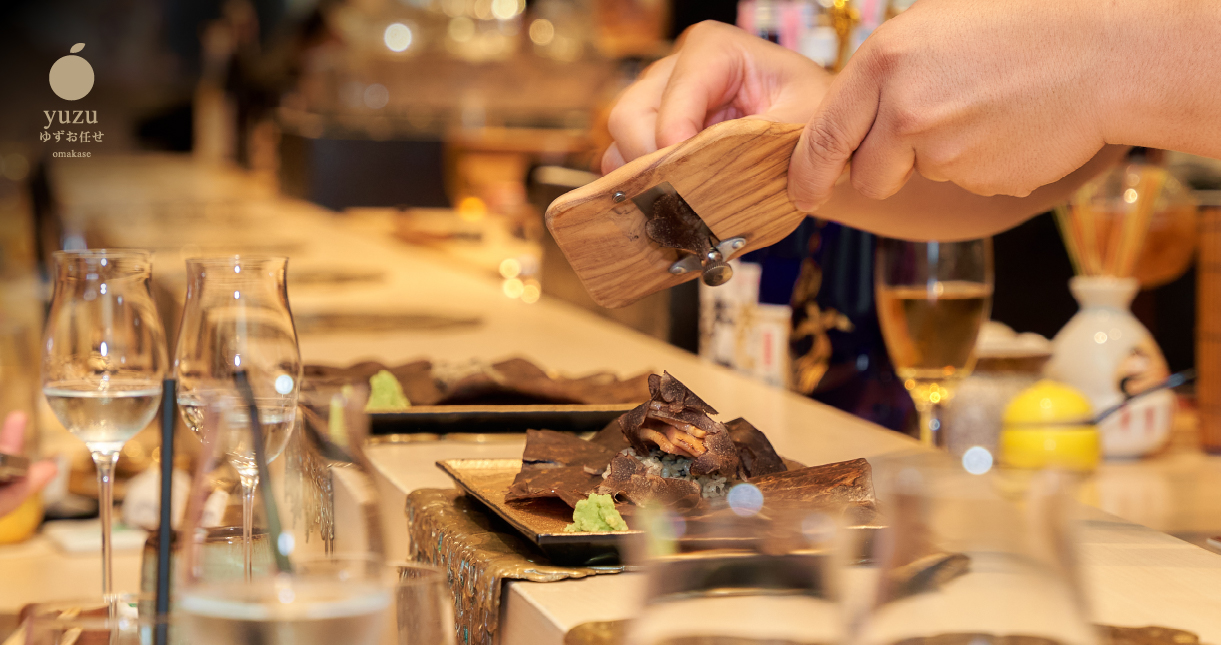
Japanese Dining Etiquette: What to Expect at an Omakase Restaurant
Introduction: The Art of Omakase and Japanese Dining Etiquette Dining at an omakase restaurant is not just about savoring high-quality food; it is a cultural experience deeply rooted in Japanese tradition and customs. For those unfamiliar with Japanese dining practices, stepping into an omakase restaurant can feel like entering a world of precision, respect, and elegance. From how you interact with the chef to the correct way to enjoy each dish, Japanese dining etiquette plays an integral role in the overall experience.
The World ● 2024 Sep 30
Japanese Dining Etiquette: What to Expect at an Omakase Restaurant
At Yuzu Omakase, located in the heart of Siam Square, Bangkok, we honor these traditions and ensure that every guest is part of a dining experience that reflects the essence of Japanese food culture. This guide will help you navigate the cultural practices and dining etiquette that are essential when dining at an omakase restaurant, so you can enjoy your meal with confidence and respect for the customs that define this unique style of dining.
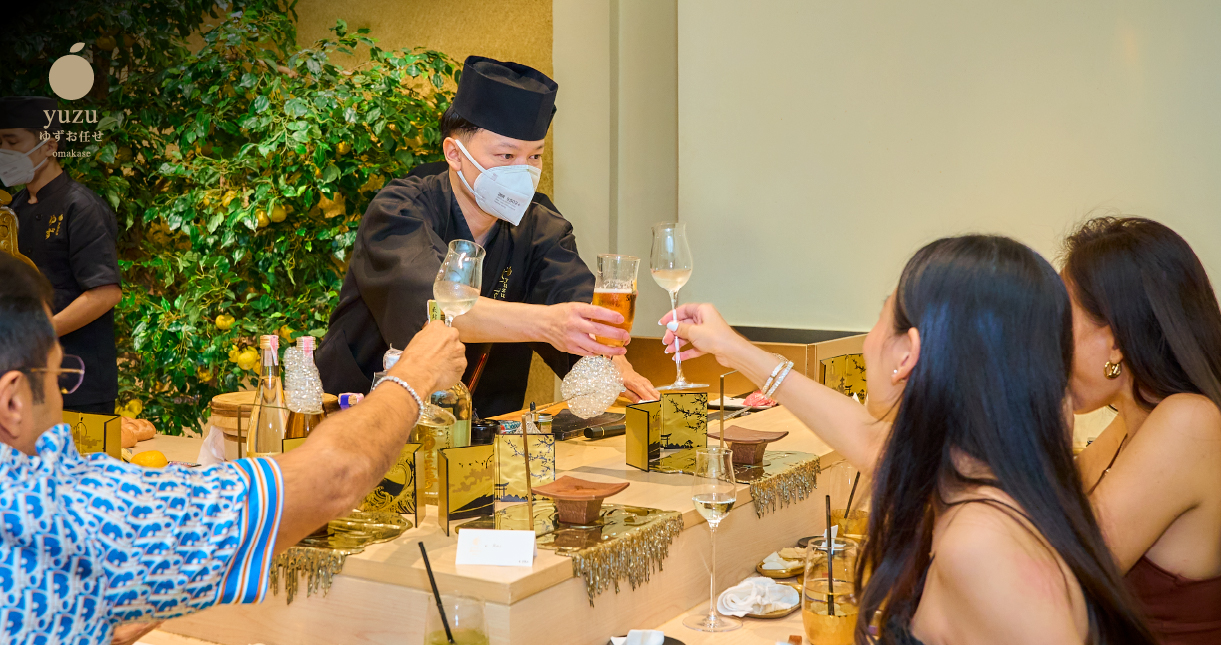
1. Understanding the Meaning of Omakase
The word "omakase" translates to "I leave it up to you." In the context of dining, this means that you are entrusting the chef to curate your meal based on the freshest and most seasonal ingredients available. Unlike traditional restaurant experiences, where you choose items from a menu, omakase dining places complete trust in the chef’s hands, allowing them to craft a personalized and carefully curated meal.
Because of this, omakase dining is often viewed as a partnership between the chef and the guest. The chef designs the meal based on what is available and in season, while the guest’s role is to appreciate and enjoy each course as it is presented. With this in mind, it’s important to approach the meal with an open mind and a sense of curiosity, as the dishes may include ingredients or flavors you have never experienced before.
At Yuzu Omakase, our chef is dedicated to bringing out the best in each ingredient, offering a culinary journey that is deeply connected to both the seasons and the traditions of Japanese cuisine.
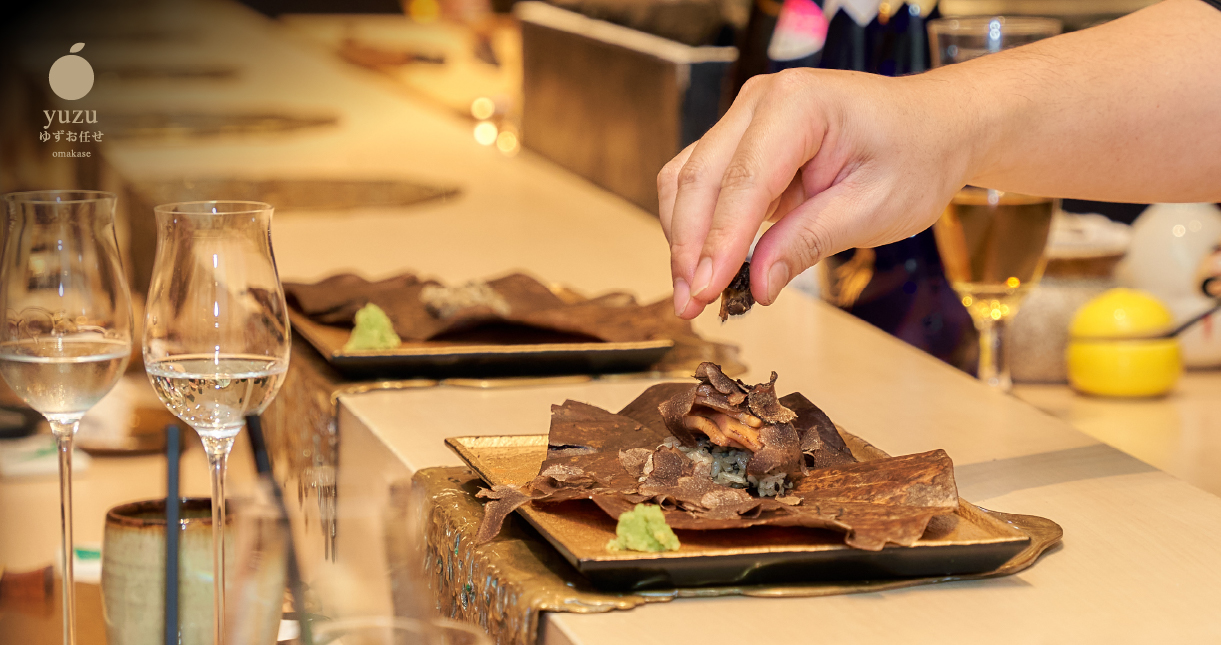
2. Greet the Chef and Staff with Respect
Respect is a cornerstone of Japanese dining etiquette. Upon entering an omakase restaurant, it’s customary to greet the chef and staff with a polite bow and a simple greeting, such as "konbanwa" (good evening) or "arigatou gozaimasu" (thank you). In an omakase setting, where the interaction between the chef and the diner is more personal, this acknowledgment helps establish a respectful and courteous relationship.
As the meal progresses, it’s also common to offer compliments to the chef, especially after particularly delightful courses. The phrase "oishii" (delicious) is a simple yet effective way to express your appreciation for the chef’s skill and effort. However, it’s important to be mindful of the atmosphere—keep compliments polite and brief, allowing the chef to continue focusing on their work.
At Yuzu Omakase, we pride ourselves on fostering a warm and welcoming environment, where respect for the chef’s artistry is a key part of the dining experience.
3. Be Mindful of Your Seating Position
In an omakase restaurant, the seating arrangement plays an important role in the dining experience. The sushi counter is often where the most direct interaction with the chef takes place, and seats closest to the chef are considered the most prestigious. If you are seated at the counter, remember that the chef is preparing each dish specifically for you, so your attentiveness and appreciation are important.
It’s also customary to avoid sitting with your back to the chef or the restaurant’s focal point, as this can be seen as disrespectful. When dining at Yuzu Omakase, we recommend sitting at the sushi counter to fully immerse yourself in the omakase experience and watch as the chef prepares each course with precision and care.
4. Appreciate the Food as it is Served
One of the hallmarks of omakase dining is the way each dish is served individually, with great attention to detail. Each course is meant to be enjoyed immediately upon presentation, as the chef has carefully timed the preparation to ensure optimal flavor and texture. For example, sushi should be eaten as soon as it is placed in front of you to experience the fish and rice at their freshest.
It’s important to avoid letting dishes sit for too long, as this can diminish the quality of the ingredients. At Yuzu Omakase, our chef serves each course in a specific sequence, with the intention of guiding you through a progression of flavors. By savoring each dish as it arrives, you honor the chef’s skill and dedication to the craft.
How to Eat Sushi and Sashimi
Sushi
Pick up the sushi with your fingers or chopsticks, dip the fish side (not the rice) lightly into the soy sauce, and eat it in one bite. Avoid over-dipping the sushi, as this can overpower the delicate flavors of the fish.
Sashimi
Use chopsticks to enjoy sashimi. Dip the fish lightly in soy sauce and, if desired, add a small amount of wasabi to enhance the flavor. Be careful not to overdo the wasabi, as it can overwhelm the natural taste of the fish.
5. Use Soy Sauce and Wasabi Sparingly
In Japanese dining etiquette, soy sauce and wasabi are considered condiments to enhance the flavor of sushi and sashimi, not to dominate it. When dining at an omakase restaurant, it’s important to trust the chef’s preparation and seasoning of each dish. Many sushi chefs, including those at Yuzu Omakase, carefully balance the flavors of each piece of sushi, often pre-seasoning it with just the right amount of soy sauce or wasabi.
If soy sauce is provided, dip the fish side of the sushi, not the rice, into the sauce to prevent the sushi from falling apart or becoming too salty. Similarly, when using wasabi, add only a small amount, as the chef has already considered the ideal balance of flavors. At Yuzu Omakase, our chef prepares each dish with precision, ensuring that the natural flavors of the fish and other ingredients shine through without the need for excessive condiments.
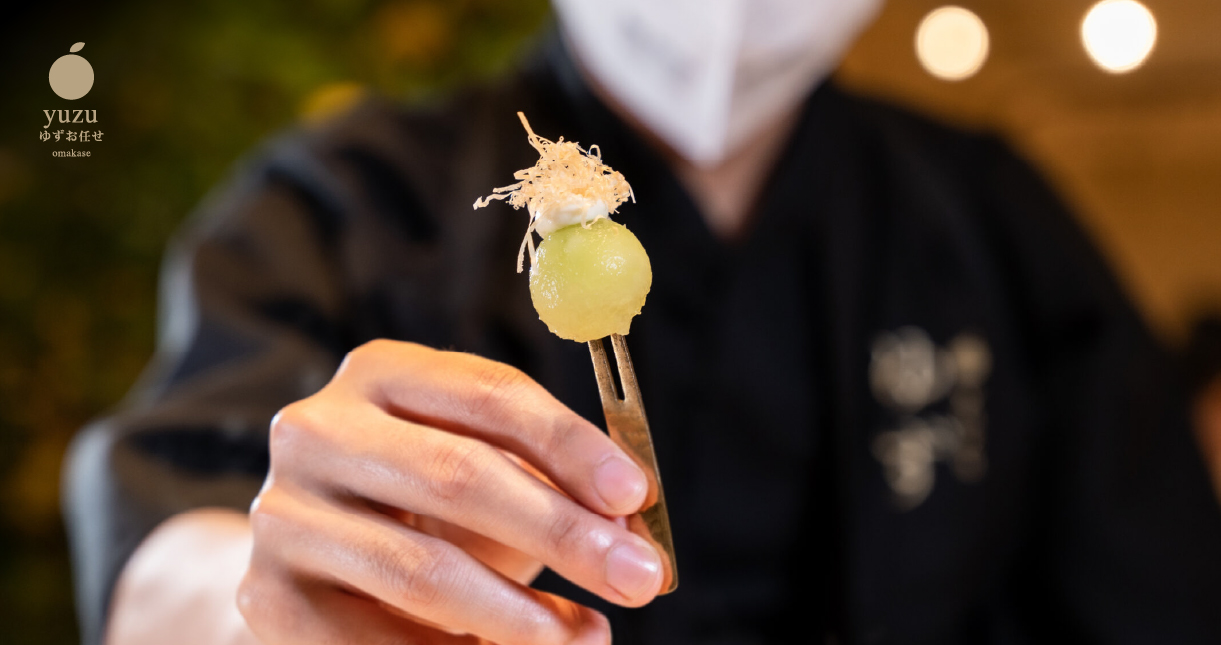
6. Savor Each Bite Mindfully
Dining at an omakase restaurant is an opportunity to slow down and appreciate the artistry of each dish. Rather than rushing through the meal, take the time to savor each bite mindfully. Pay attention to the texture, flavor, and presentation of the food, and enjoy the journey through the different courses.
Omakase dining is meant to be a thoughtful experience, where you connect with the food and the chef’s craft. At Yuzu Omakase, we encourage our guests to immerse themselves fully in the dining experience, appreciating the subtle nuances of each dish as they progress through the meal.
7. Keep Conversation Low and Respect the Atmosphere
Omakase dining is often an intimate and serene experience, where the focus is on the food and the interaction between the diner and the chef. To maintain this ambiance, it’s important to keep conversation at a low volume and avoid any distractions, such as using your phone at the table. This allows you to fully engage with the meal and show respect for the chef and other diners.
At Yuzu Omakase, we aim to create a peaceful, reflective environment where guests can focus on the culinary journey. By maintaining a calm and quiet atmosphere, you enhance the dining experience for both yourself and those around you.
8. Express Gratitude at the End of the Meal
At the conclusion of the meal, it’s customary to express your gratitude to the chef and staff for the meal. A simple "gochisosama deshita," which means "thank you for the meal," is a polite and respectful way to show your appreciation. This phrase reflects the gratitude you feel not only for the food but also for the time, effort, and skill that went into preparing each course.
At Yuzu Omakase, we value the relationship between the chef and the diner, and expressing gratitude is an important part of this connection. Whether you are dining at the sushi counter or in one of our private rooms, ending your meal with a heartfelt "thank you" is a meaningful way to honor the dining experience.
Conclusion: Enjoying Omakase with Respect and Appreciation
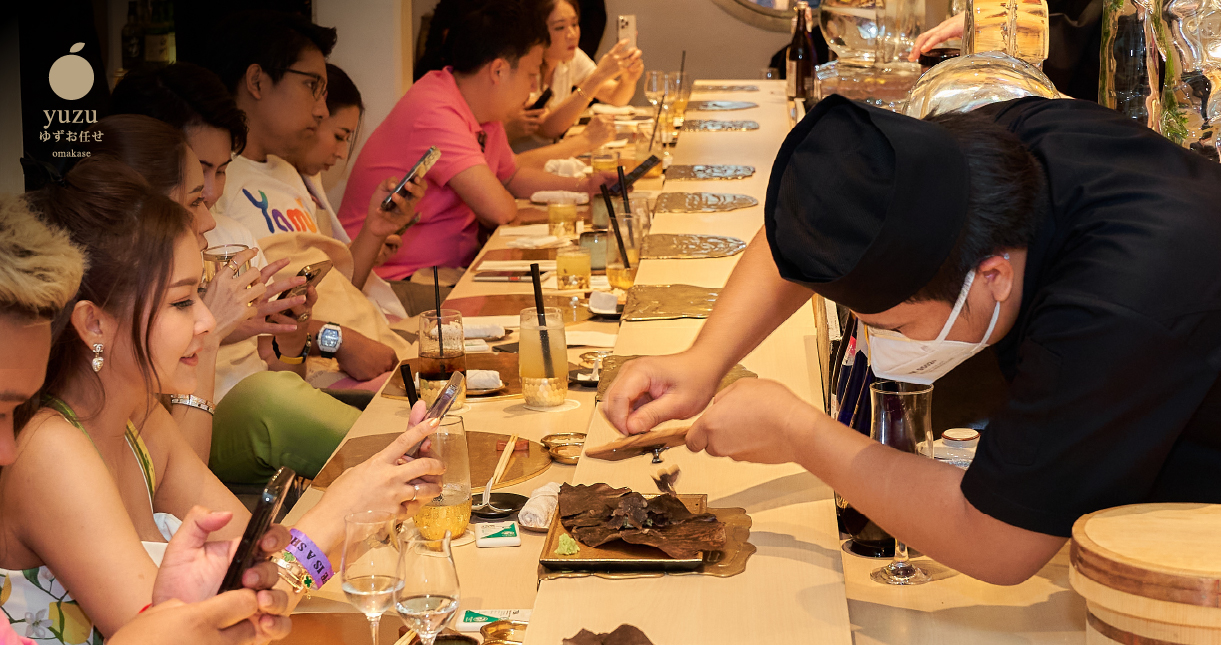
Dining at an omakase restaurant is a unique and deeply cultural experience that goes beyond simply eating a meal. It is about connecting with the chef, appreciating the artistry of the food, and embracing the traditions of Japanese dining etiquette. At Yuzu Omakase, we strive to provide an authentic and respectful omakase experience, where guests can fully immerse themselves in the flavors, textures, and customs of Japanese cuisine.
Whether you are new to omakase or a seasoned diner, following these etiquette guidelines will enhance your dining experience and show your respect for the chef and the traditions of omakase. Ready to experience the best of Japanese dining? Book your seat online today and join us at Yuzu Omakase for an unforgettable omakase journey.

RELATE







